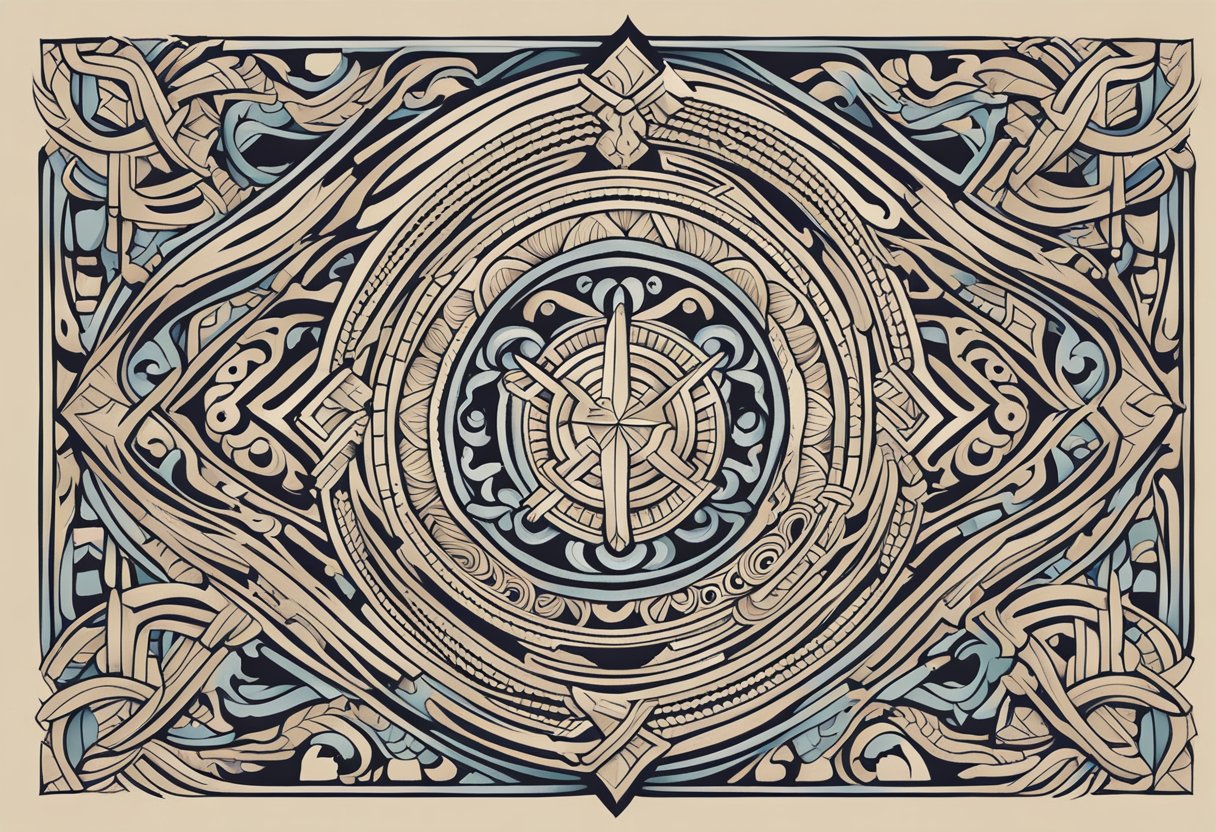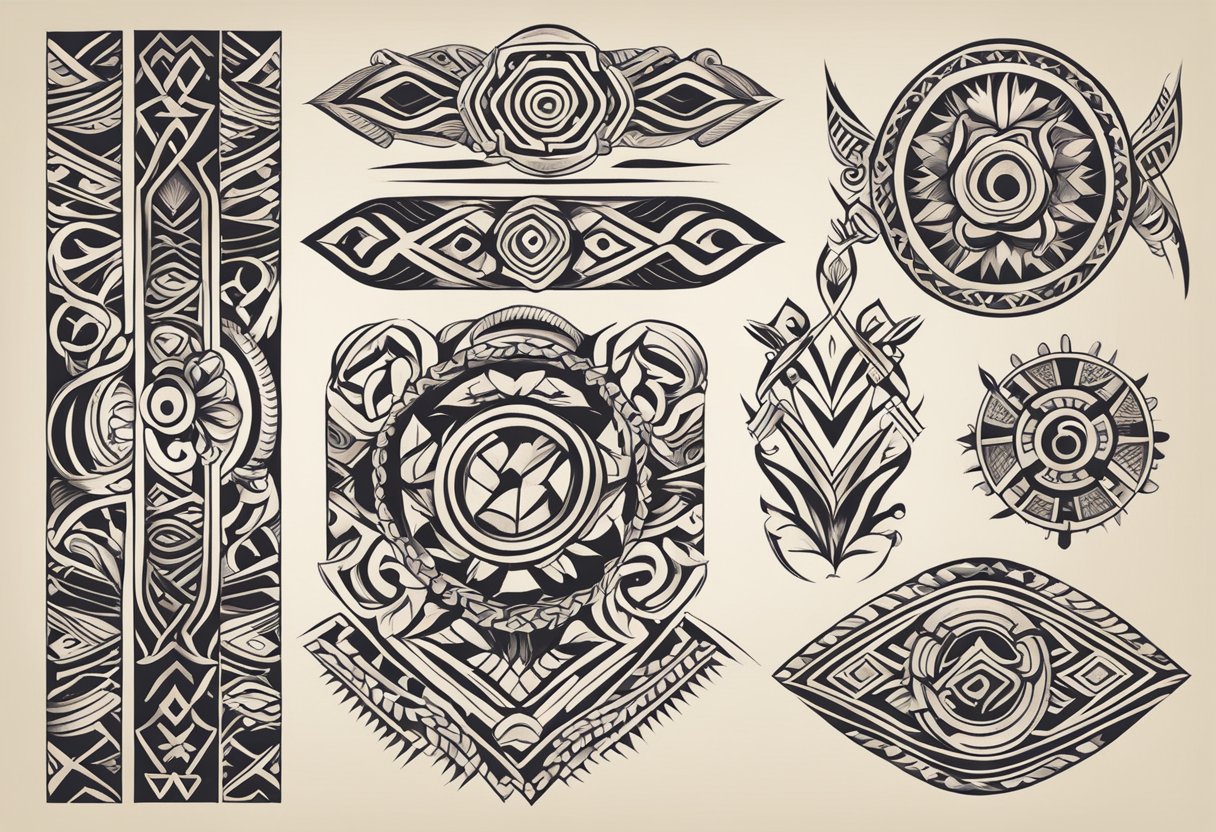Filipino tribal tattoos have a rich cultural heritage that has been passed down from generation to generation. These tattoos have a deep meaning behind them, and each symbol tells a unique story. The evolution of the meanings behind Filipino tribal tattoo symbols reflects a broader shift towards cultural appreciation and reinterpretation.
Filipino tribal tattoos can be traced back centuries ago when the indigenous people of the Philippines adorned their bodies with inked markings. The tattoos were a symbol of status, strength, and courage. The tattoos were also used to protect the wearer from harm and bring good fortune. Today, Filipino tribal tattoos have gained popularity and are appreciated for their intricate designs and deep meaning.
The animals, warriors, and ancestors are some of the most common symbols found in Filipino tribal tattoos. Each symbol has its unique meaning and significance. The animals are considered guardians and spirit guides, while the warriors and ancestors represent bravery, strength, and reverence. The meanings behind these symbols have adapted to changing times while still retaining their rich cultural heritage.
Meaning of Filipino Tribal Tattoo

Filipino tribal tattoos have a rich cultural heritage that is based on the practices and beliefs of their ancestors. These tattoos are a symbol of bravery, passion, personality, and goal-oriented skills. The designs are intricate and often represent animals, nature, and mythological figures. They are also believed to bring positivity into the wearer’s life.
Ancient Practices
The origins of Filipino tribal tattoos can be traced back centuries ago when the indigenous people of the Philippines adorned their bodies with inked markings. The tattoos were done using a thorn from local calamansi trees as the primary tool. The thorn was attached to a wooden stick and dipped in a charcoal paste. The tattoo artist then tapped the thorn repeatedly into the skin or cut/prickled the skin, and charcoal powder was rubbed into the wound.
Cultural Significance
Filipino tribal tattoos hold significant cultural importance. The tattoos are often seen on warriors and signify their courage in battle. They are also believed to provide protection and guidance to the wearer. The designs of the tattoos are often intricate and detailed, representing the agility and adaptability of the animals they depict. Some of the most common designs include lizards, geckos, and anitos, which are supernatural beings in Filipino mythology.
In conclusion, Filipino tribal tattoos are a symbol of the wearer’s bravery, passion, personality, and goal-oriented skills. They have a rich cultural heritage and are believed to bring positivity into the wearer’s life. The designs are intricate and often represent animals, nature, and mythological figures.
Understanding Filipino Tribal Tattoos

Filipino tribal tattoos have a rich cultural heritage that dates back centuries ago. These tattoos are not just works of art etched onto the skin but also hold deep cultural and symbolic meaning. Understanding the meaning and significance of traditional Filipino tribal tattoos is essential to appreciate their beauty fully.
Symbolism and Meanings
Filipino tattoos are rich in symbolism and meaning. Each symbol and design featured in these tattoos represents important elements of Filipino tribal culture, such as bravery, strength, and unity. The following are some of the most common Filipino tattoo symbols and their meanings:
- The Tribesman/Warrior: Bravery and Strength
- The Animals: Guardians and Spirit Guides
- The Ancestors: Reverence and Protection
Common Motifs
Filipino tribal tattoos feature a wide range of motifs. The following are some of the most common motifs used in Filipino tattoos:
- Sun: Represents life, energy, and rebirth
- Stars: Symbolize guidance and direction
- Waves: Signify the ocean, the source of life
- Mountains: Represent strength and stability
In conclusion, Filipino tribal tattoos are not just art but also a representation of the rich cultural heritage of the Philippines. Understanding the symbolism and meanings behind these tattoos is essential to appreciate them fully.
Design and Aesthetics

Filipino tribal tattoos are known for their intricate designs and meaningful symbols. These tattoos are often seen as a way to express one’s identity, beliefs, and social status. The designs of these tattoos vary depending on the tribe and region.
Traditional Patterns
Traditional Filipino tribal tattoos are often symmetrical and geometric in nature. They feature patterns and symbols that have been passed down from generation to generation. Some of the most common traditional patterns include the batok, pinta, utang, and patik. The batok symbolizes strength and courage, while the pinta represents beauty and femininity. The utang and patik denote identity and social status.
Another popular traditional pattern is the kalinga, which is a symbol of bravery and honor. This pattern is often seen on the arms and chest of the wearer. The kalinga is characterized by its intricate lines and curves, which represent the strength and resilience of the wearer.
Modern Interpretations
In recent years, there has been a resurgence of interest in Filipino tribal tattoos. Many modern artists have taken inspiration from traditional patterns and symbols, but have added their own unique twist. Some modern interpretations include incorporating elements of nature, such as flowers and animals, into the designs.
Others have experimented with different color palettes, using bright and bold colors to make the tattoos stand out. Still, others have combined traditional patterns with modern techniques, such as 3D printing, to create truly unique designs.
Overall, Filipino tribal tattoos are a beautiful and meaningful way to express one’s identity and beliefs. Whether you choose a traditional pattern or a modern interpretation, these tattoos are sure to make a statement.
Cultural and Personal Identity

The art of Filipino tribal tattoos is steeped in cultural and personal identity. These tattoos are not just decorative, but they represent a rich cultural heritage that has been passed down from generation to generation. Filipino tribal tattoos are a way of expressing one’s cultural and personal identity through the art of tattooing.
Expression of Heritage
Filipino tribal tattoos are a way of expressing one’s cultural heritage. These tattoos are often passed down from generation to generation and serve as a way to connect with one’s ancestors and heritage. The intricate designs and patterns of these tattoos are a reflection of the rich cultural heritage of the Philippines. Each design and pattern has a specific meaning and represents an important element of Filipino tribal culture.
Personal Narratives
Filipino tribal tattoos also serve as a way of expressing personal narratives. These tattoos tell a story about the individual who wears them. The designs and patterns of these tattoos often reflect personal experiences, beliefs, and values. For example, a tattoo of a particular animal may represent a personal connection to that animal or a specific experience related to that animal.
In conclusion, Filipino tribal tattoos are not just decorative, but they represent a rich cultural heritage and serve as a way of expressing one’s personal identity. These tattoos are a reflection of the individual’s cultural and personal experiences, beliefs, and values. The intricate designs and patterns of these tattoos are a testament to the artistry and cultural significance of Filipino tribal tattoos.

